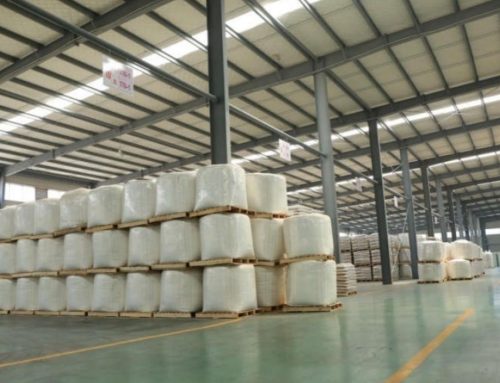With the improvement of the quality of life, diapers have become one of the necessities of consumers’ daily life. Although their product coverage and sales volume are increasing year by year, there are still many problems in the diapers industry. The most complaints are diapers leakage and baby rash in the after-sales service of diaper manufacturers and sellers, what is the cause?
The following is a detailed analysis of the problem of urine leakage from the aspects of consumer use and the design of the diaper itself.
First of all, it is the urine leakage caused by the problems of the consumers themselves during the use of diapers, mainly in the following aspects
- Wearing incorrectly,
- Size is not appropriate,
- Didn’t replace diapers in time, excessive urine, saturated,
- Baby’ s activities cause the diapers deviate from asymmetry,
- Baby sleep on his stomach making too much urine in the front of the diaper, caused leakage
Secondly, from a professional point of view, that is, the design of diapers may have problems
- Selection of top sheet: if diapers choose poor hydrophilic non-woven fabric, after absorbing urine many times, the top sheet of non-woven fabric becomes less hydrophilic, which makes the liquid remain in the top sheet, not easy to infiltrate, and will increase the rate of urinary leakage.

Determination of hydrophilicity by 10 drops of liquid
2. Core structure: for example, the design of channel for layer in low basic weight products in the market, wider diversion channel can increase the risk of leakage of urine. We need to select the width of channel according to the weight of core is 430g/m2 , the width of channel should not exceed 1.5 cm, and if the weight of core is 430-480 g/m2, the width of channel should not exceed 2.5 cm, and if the core weight is 480g/m2, the width should not exceed 3.5 cm.
3. Polymer collocation scheme: if we make the polymer collocation scheme with slow absorption speed SAP, it will lead to the slow absorption speed of diapers and increase the rate of leakage. So we suggest using SAP with good liquid permeability and fast absorption speed,
4. The control of glue quantity in diapers: if the amount of glue between each layer of the materials are too large, it will cause the absorption speed of diapers slow down and will lead to urine leakage. At the same time, in the production process, strictly control the amount of glue set parameters can also reduce the diaper costs.
5. Cuff Design:
a. For the cuff of the diapers, if use one layer SMS hydrophobic, the leakage prevention effects will be weaker, there will be the risk of urine leakage. We suggest using double layers SMS hydrophobic in diapers, then the leakage prevention effect will be better.
b. If the spandex adjustment of diapers is too loose, the tension is too small, the urine can not be pocketed, this will cause leakage of urine We suggest increasing the tightness of spandex to prevent leakage of urine.

Double Layer and Single Layer Cuff
6. Elastic waist band design: If diapers back waist elasticity is too small, will increase the rate of urine leakage. It is suggested that the elastic design of waist circumference should be moderate and fit with the baby to avoid urine leakage.
The above is a comprehensive analysis of the causes of urine leakage from consumers themselves and the overall design of diapers. It is not only necessary to guide young mothers how to use diapers correctly, pay attention to the right size, use the correct way of wearing, and change diapers in time.
As one of the common problems of diaper complaints in the market, baby rash have attracted much attention. There are many reasons for baby rash. In addition to the baby’s physical differences, skin sensitivity and incorrect wearing of diapers, the advantages and disadvantages of diapers themselves have a great impact on baby’s skin, such as the advantages and disadvantages of non-woven fabric on the surface of diapers, the permeability of bottom film and the quality of SAP advantages and disadvantages will cause baby red ass.
Ifluencing Factor 1: SAP absorbtion speed. It the SAP absorption speed is too slow, also the diapers absorption speed is too slow, thus causing diapers’ surface not dry in the process of using, easily to grow bacteria in a warm and humid environment. Baby’s skin faces a humid and multi bacteria environment for a long time, thus babies with sensitive skin will have the risk of baby rash.
Influencing factor 2, the conductivity of SAP. In diapers, especially core diapers, the better the conductivity of sap, the better the conductivity of diapers, and the higher the utilization rate of products. The high utilization rate of the product can not only make the surface of the diaper more drier, but also extend the service life of the product , so that the product can achieve long-term dryness, and reduce the probability of baby rash caused by too long time using.
The third factor: The content of residual monomer in SAP. Residual monomer refers to the residual acrylic acid monomer that is not polymerized or produced in the later stage of SAP. These polymer residues will reach to the diapers’ surface with body fluid in the process of water absorption, and the excessive content of residual monomer in SAP will cause certain irritation to the skin. The higher the content of residual monomer, the more easily lead to baby rash, which is one of the main factors causing baby rash. At present, the Chinese standard of SAP residue is < 800mg / kg and the European standard is < 500mg / kg but the residual monomer content of our supplied SAP is controlled at about 150mg / kg, which is equivalent to that of Sumitomo.

The fourth factor: Extractable content of SAP. The sodium polyacrylate used in the hygienic products industry is a macromolecular chain structure. After a long time of hydrolysis, the molecular chain breaks into small molecules and dissociates, forming oily matter on the surface of diapers, which is likely to have an impact on the baby’s skin. The performance of long-term rewet and extractable content of SAPs’ are very important. You can find the procedure to test extractable content in the link.



Leave A Comment